Welcome back, time travelers! Last week, we took a look at some common methods of time travel in books, movies, and TV shows—including the “history can be changed” model of Back to the Future, the “time travel without consequence” model of Midnight in Paris, and the “self-fulfilling prophecy” model of The Terminator. This week, we explore some less-conventional theories of time travel, including temporal causality loops, the Multiverse theory, and a look at Einstein’s Theory of Relativity…
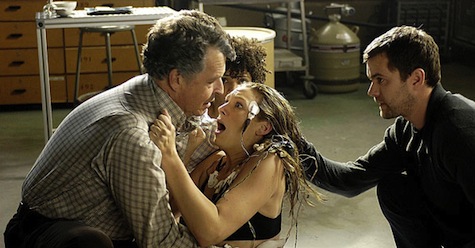
4. Sideways Through The Looking Glass: Exploring the Multiverse
The Multiverse is one of the newer and more interesting theories of time travel floating in the cosmic jetsam. The premise is this: there are infinite parallel universes all around us, and anything that can exist, does exist. This idea was explored in the 1990s TV show Sliders, in which the main characters “slid” between parallel universes; the multiverse has also showed up in Star Trek episodes, including a Next Generation episode in which Worf finds himself slipping into fractured parallel realities in which, amongst other things, he is married to the petite Counsellor Deanna Troi.
Mainstream movies and TV have explored the “alternate reality” idea to various degrees. The recent NBC series Awake followed a detective who found himself living two parallel realities after a car crash: one in which his wife survived, one in which his son survived. (The show was canceled due to low ratings, but only in this universe.) The romantic comedy Sliding Doors starred Gwyneth Paltrow as two versions of herself in branching timelines: one in which she caught a train, one in which she missed it. That movie brought back memories of Mr. Destiny, in which Jim Belushi learned how his life would have changed if he’d swung his bat a half second earlier at a high school baseball game.
But the multiverse really came into its own with Fringe, the J.J. Abrams show that explored two parallel universes bent on destroying one another. Complete with doppelgangers and government conspiracies and a rich alternate history, the show explored the twin universe idea from many bizarre angles. (The show’s opening credits even changed colors depedning on which universe took center stage that week.) Of course, Fringe was a jumping off point for a lot of great high concept sci-fi, including one episode involving our next kind of time travel: the infinite repeating loop.
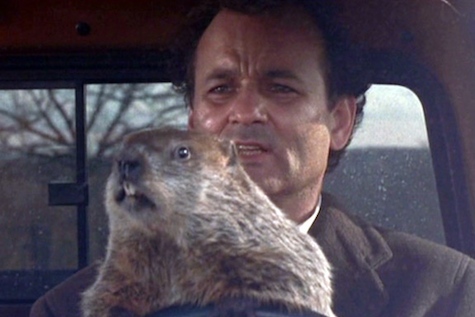
5. Time Is A Loop: It’s Groundhog Day!
Many time travel stories feature characters caught in a “loop” where events repeat until they somehow find a way out. Groundhog Day did this so brilliantly that the movie’s title has come to be synonymous with déjà vu. In the movie, Bill Murray finds himself living through February 2nd over and over and over in a small rural town. At first he selfishly takes advantage of this (it takes him several loops to figure out how to bed Andie MacDowell); then he repeatedly commits suicide; and finally he learns that only kindness will get him to February 3rd. If you haven’t seen it, you haven’t lived.
A year before that movie was released, Star Trek: The Next Generation used a similar idea in one of its most brilliant episodes, “Cause and Effect.” The episode opens with the Enterprise exploding, and from there the hour is a series of loops in which the same events repeat themselves four times over, each with subtle differences, always ending with the ship’s destruction. Only after realizing they’re caught in a loop does Data work out how to send his future self a message (via a poker game) and avert the catastrophe.
A similar technique formed the basis of Source Code, a movie which Jake Gyllenhall repeats an eight-minute loop on a doomed train as he tries to find and stop the bomber. He succeeds, but discovers he’s doing this while on life support in a kind of digital time machine… the rest was forgettable, but the setup was pretty interesting.
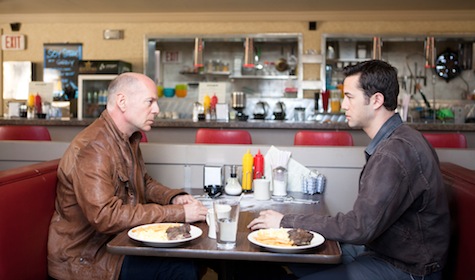
6. Closing the Loop: The Special Case of Looper
Despite its name, Looper is closer to a changing-the-past story than a time-loop story, but it’s unique enough that it deservers a category of its own. The premise: in the late 21st century, the mafia eliminates people by sending them back in time to be killed by contract hit men. The catch: when a killer’s contract is up, they themselves get sent back in time to be killed by their younger selves, a process called “closing the loop.”
When Joseph Gordon Levitt fails to close the loop on his own future self (Bruce Willis), a cat and mouse chase ensues with strange repercussions. Willis, though fighting for his life, can’t kill or even maim Levitt, since whatever he does to his younger self affects him. When Levitt takes an injury, Willis gets the scar; then again, when Willis wants to know where Levitt is, all he has to do is remember. Looper conjures up some pretty unique time travel ideas, including its dark but poetic ending.
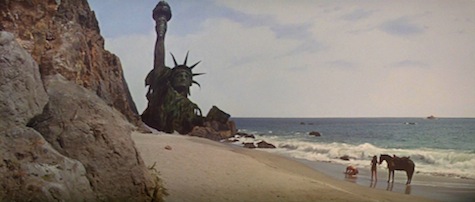
7. Time Travel as Hard Science: Einstein’s Theory of Special Relativity
Believe it or not, time travel is not just fiction: it’s a mathematical fact. Albert Einstein theorized nearly a century ago that objects traveling close to the speed of light experience something called “time dilation”—essentially, time passes more slowly for a fast-moving object than for the world around it. So in theory, if you take a quick flight across the galaxy and back, hundreds or thousands or millions of years will have passed on Earth. Flying extremely fast is actually a form of time travel.
Most science fiction ignores time dilation. But one movie took Einstein’s theory and ran with it: The Planet of the Apes. After an eighteen-month journey at near-light speed, the main characters crash land on what they think is a distant planet inhabited by talking apes—only to discover it’s actually Earth, thousands of years in the future. Unfortunately for the crew, time dilation only works in one direction….
Speaking of which: Superman flying around the Earth so fast that the planet spins in reverse and time flows backwards has nothing to do with Einstein. Even assuming Superman has enough magnetic power to change a planet’s angular velocity, Special Relativity only allows for backwards time travel if an object moves faster than the speed of light, which is impossible. Next time, Superman, try a wormhole…
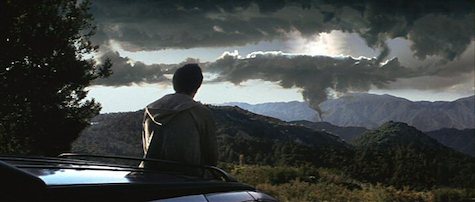
8. Time Travel is Strange and Complex: Temporal Outliers
Time travel can be truly mind-bending. While a movie like Midnight in Paris might offer no real explanation for its termporal antics, Looper can tie your brain in painful knots. But if you really want a headache, check out the 2004 movie Primer, which takes time travel logic to a whole new level of complex. The movie’s timelines twist and diverge and intersect with each other to such a degree that you’ll need a chart to understand how it all fits together. Fortunately, several such diagrams are available online.
Another mind-bending outlier is Donnie Darko. This dark yet melodious film is essentially a multiverse story, but it plays as something more. The story is about a “Tangent Universe” that briefly comes into being, but grows unstable and unravels, leading a young, psychotic Jake Gyllehnall to experience memories in reverse (among other bizarre phenomena). The genius of the movie is that you can get all the way to the end and have no idea what just happened—not unless you watch the Director’s Cut, or read excerpts from the film’s fictional book, The Philosophy of Time Travel.
And then there’s Doctor Who. With eleven actors having played “The Doctor” over the show’s fifty year, 800+ episode run, Britain’s epic TV series is astonishingly unclassifiable. Not having seen enough Doctor Who to summarize it, I won’t embarrass myself by trying. Suffice it to say that no discussion of time travel would be completely without tipping one’s hat (and one’s police box) to the Time Lord. (Feel free to discuss in the comments.)
So what have we learned here, time travelers? The big lesson is this: before you embark on a trip through time, know thy universe. There are many ways to travel through time, and it’s essential to know whether you risk changing the future or simply getting lost in an infinitute of parallel realities.
When it comes to what type of time machine to select, there are tons of options available, from sleek silver cars to bubbling hot tubs. If anything goes wrong on your journey, just jump back in time and fix it—unless your time machine breaks, in which case you’re shit out of luck I’m afraid.
Just one request: try not to destroy the universe. Because then not only would we all cease to exist, we’d never get to see what other time travel stories the future has in store—and a future without time travel is no future at all.
Brad Kane writes for and about the entertainment industry, focusing on storytelling in movies, TV, games, and more. If you enjoyed this article, you can follow him on Twitter, like his page on Facebook, or check out his website.










